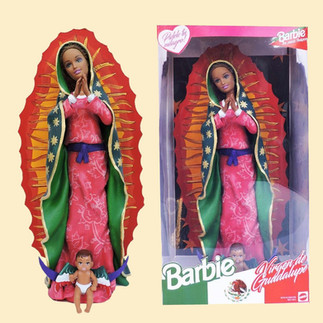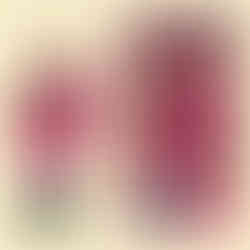Saint Barbie
- Curators' Team

- Jun 9
- 3 min read
Updated: Nov 23
"Barbie: The Plastic Religion" Exhibition
In 2015, Buenos Aires became a focal point of cultural discourse when artists Marianela Perelli and Pool Paolini, known as Pool&Marianela, launched a provocative showcase that posed a compelling question: Can the world’s most iconic toy also serve as a symbol of the sacred?

A Divine Icon
The exhibition cleverly intertwined religious iconography, particularly from Christianity, by portraying Barbie and her companion Ken as revered figures such as saints and Jesus Christ. Previous exhibitions had faced backlash from conservative groups who perceived the artwork as blasphemous. However, this particular work garnered unexpected support from notable figures, including Pope Francis, who owns one of the artists' custom Barbie figures, Mattel, the manufacturer of Barbie, and the Palais du Louvre, which featured several of their boxed Barbie and Ken dolls in its decorative arts collection.
Featuring over thirty Barbie and Ken dolls reimagined as religious figures, the exhibition showcased a range of Catholic saints, the Virgin Mary in her various local forms (including Argentina’s cherished Virgin of Luján), and icons from different faiths. The dolls were meticulously crafted, reflecting the attributes and symbolism of their holy counterparts—Barbie adorned in the blue-and-white robes of the Virgin or the elaborate attire of esteemed saints, while Ken embodied martyrs and prophets. This transformation of everyday plastic into objects of reverence sparked both devotion and debate.
Before its official opening at the POPA gallery in October 2014, “Barbie: The Plastic Religion” faced significant controversy. Vocal opposition, particularly from Catholic organizations, deemed the exhibition irreverent and offensive, leading to the cancellation of the initial public showing amidst threats and protests. Ironically, this backlash amplified interest, highlighting art's capacity to ignite discussions about tradition, representation, and the limits of creative expression.
Perelli and Paolini defended their work as playful explorations at the crossroads of pop culture, faith, and consumerism. They argued, “In a society where everything is marketable, why not faith?” The artists intended the dolls not as a mockery, but as a commentary on how society commodifies even its most sacred symbols. The ensuing controversy became part of the artwork's impact, leading to another venue in Buenos Aires where audiences could experience the tension between childhood nostalgia and spiritual significance.
Almighty Controversy
Barbie, in her plastic perfection, serves as a reminder that our saints, like our idols, reflect the world we create around them. Both “Barbie: The Plastic Religion” and other artistic expressions underscore the dynamic intersection of art, commerce, belief, and identity. They invite audiences to consider how icons can be reshaped—where the sacred becomes playful, and the playful takes on sacred meaning.

In his 1994 painting "Saint Barbie," Mark Ryden puts the icon of manufactured femininity in the position of a deity, and the nostalgic innocent girl as pleading worshipper. His art challenges traditional interpretations of the doll, repositioning her within a fantastical and mystical context. This approach is seen as both captivating and thought-provoking, prompting viewers to consider Barbie's cultural significance in new ways.
But, according to many, Barbie is not free of sin if playing with the doll leads to idolizing materialism, undermining healthy body image, encouraging sexualized behavior in children, or replacing religious duties/values, then it could be morally problematic in some frameworks.
In 2010, Rev. Dena Cleaver-Bartholomew, rector of Christ Church in Manlius, New York, gained popularity on Facebook when she posted photos of an OOAK (One of a Kind) Barbie, accompanied by several church outfits, a gift she received from a friend, Rev. Julie Blake Fisher, in Kent, Ohio.
Rev. Bartholomew
The Religious Dilemma

Depicting sacred figures or religious symbols can be sensitive. Official brands may refrain from creating products that could be seen as disrespectful or endorsing a particular faith leader. While generally avoiding such dolls in their main Barbie line, Mattel has featured figures like pagan goddesses and individuals dressed in religious attire, such as Olympic fencer Ibtihaj Muhammad, whom a hijab-wearing Barbie doll has represented as an inspirational Muslim woman.
















































